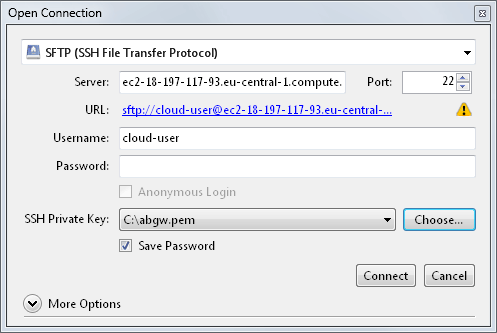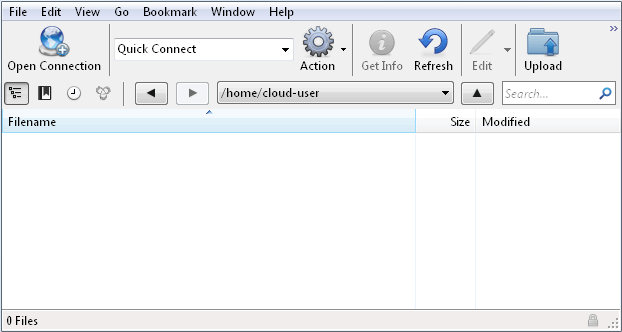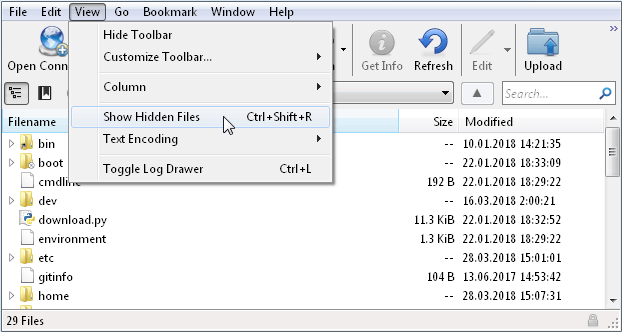3. Obtaining Password and Logging in to Acronis Cyber Infrastructure¶
After launching the instance, you need to obtain the default Acronis Cyber Infrastructure admin panel password, which is stored inside the instance in /.initial-admin-password.
You can access the instance via SSH, using the previously generated key. For example, on Linux or Mac:
# chmod 400 astor-23.pem
# ssh -i astor-23.pem cloud-user@ec2-18-197-117-93.eu-central-1.compute.amazonaws.com
# cat /.initial-admin-password
Alternatively, you can access the password file via SFTP. For example, on Windows and Mac, you can use a program like CyberDuck:
Click Open Connection.
Fill out the connection details: select SFTP as protocol, paste the instance hostname, enter user name
cloud-user, and specify the previously generated key.
Click Connect and accept the server fingerprint.
Navigate to the home directory, i.e.
/home/cloud-user.
The password file is hidden, so click View > Show Hidden Files in order to make it visible in the SFTP client.

Download and open the password file
.initial-admin-password.
Using the password, log in to the Acronis Cyber Infrastructure admin panel as admin at the instance hostname and port 8888. For example, https://ec2-18-197-117-93.eu-central-1.compute.amazonaws.com:8888/.
Take note of the following:
- Consider changing the password to one that you will remember and that will be complex enough to resist a brute-force attack.
- The instance will be using a self-signed certificate by default, so you will need to either accept it in the web browser or upload a valid certificate issued by a trusted authority.
Normally, the first step after installing Acronis Cyber Infrastructure is to create a storage cluster. This is done automatically, however, when you launch an instance with Acronis Cyber Infrastructure on Amazon EC2, so you can proceed directly to setting up Backup Gateway.
